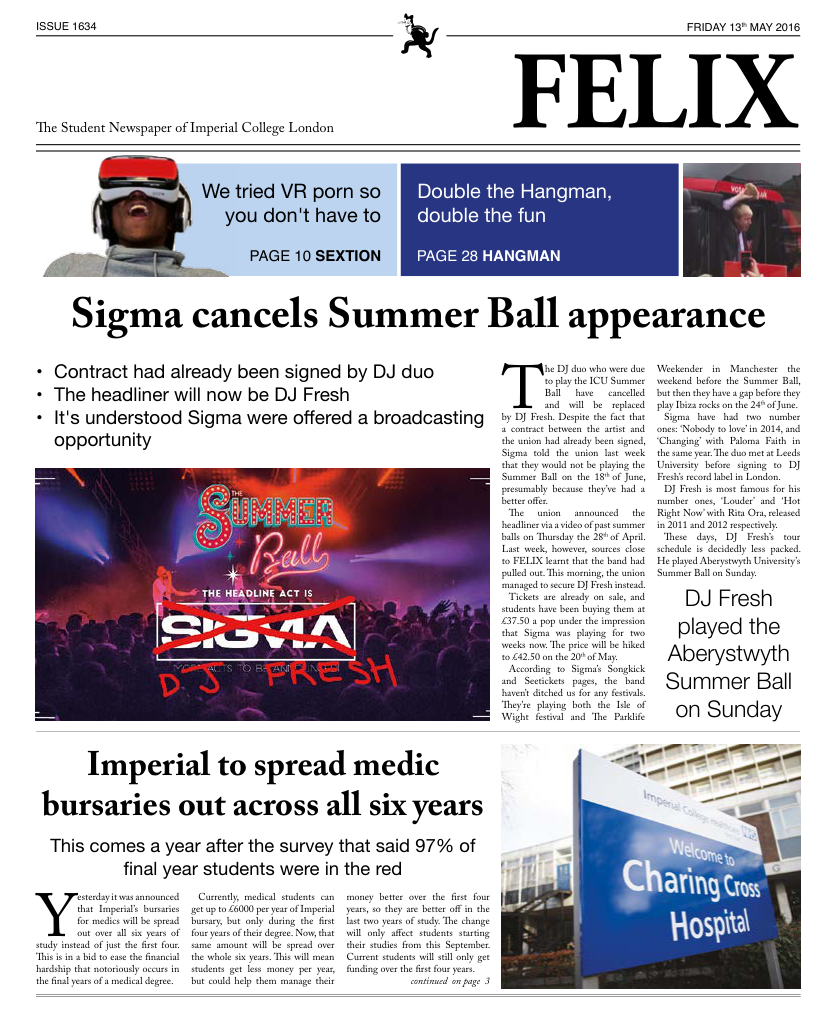Reflections on the Barbican Estate
The concrete colossus captures the optimism of the architechural era

Friends of mine will know that I have a great affinity for F. Scott Fitzgerald’s The Great Gatsby. His timeless exposé of the superficiality of the nouveau riche and the upper classes, examined in cinematic description, is simply breath-taking, with a message that is as pertinent today as in the contemporary era. Though the book is more usually associated with love and materialism, the spectacular and haunting descriptions at the close of the novel shed light on failed aspirations; something which I encountered myself not too long ago.
Before this begins to sound too much like the English essays that Imperial students shunned long ago, I should explain further. I study in St Bart’s Hospital, and walking back one day from Waitrose – yes, I was picking up free coffee, and no please don’t judge me – I chose to walk through the Barbican Estate, between the tower blocks instead of the tunnel beneath its buildings. I chose the path “less travelled”, and just as Robert Frost thought, I believe “that has made all the difference”.
I’d never really thought much about the Barbican Estate before. Located on the fringes of the City, I pass by the concrete tower blocks regularly on my way to the hospital, but usually think of it as little more than a lamentable 1960s relic, an eyesore to regret, not revere. During the war, the City was heavily bombed and mostly destroyed, requiring extensive renovation. Among the unrealised plans of building giant motorways through central London and excavating enormous underground carparks – sensing a theme here? – the Barbican Estate was meant to be the epitome of a new architectural vision, with public courtyards interspersed between ‘modern’ tower blocks. Gone were the medieval alleyways, the Barbican would feature “streets in the sky”, in a utopian fantasy built from state-of-the-art reinforced concrete. Three of the tallest residential towers in London would dominate the skyline, while a moat would conjure images of an ancient castle within the post-modern setting. This was the future in 1970, and the Barbican Centre was its archetype.
Fast-forward forty years and the utopian visions have faded with the weathering of the concrete façades. “Streets in the sky” turned into corners for crime, while the grandiose fantasies of the public strolling through were replaced by busy commuters rushing through a tunnel built for function, not fascination. No longer a vision of modernity, the Barbican Estate has become a symbol of the short-sightedness of 1960s architecture and many would not object to its demolition.
Walking as I did on that day, I saw something quite different. Staring at sights, otherwise etched into memory, I saw past my current vision, right back to its soul, which taken literally is the very essence of its existence. Along the sculpted pathways, you cannot fail to note the sheer scale and scope of the architects’ visions. The optimism with which the towers are named after great British authors. The persistence of a small puddle, the only remains of a great moat surrounding this fortress of modernity. And above all, you cannot ignore the sense of hope – the hope that people would walk around the estate, and enjoy it, rather than taking the road tunnel. Looking around, instead of seeing the estate as it is, I saw it just as Fitzgerald’s Nick Carraway saw Long Island in The Great Gatsby: “A fresh green beast of the new world”, with all the hope and optimism of a generation looking forward to peacetime after decades of war. The concrete may be rotting away today, but the blazing passion underlying the centre remains visible for as long as it stands.
All things are transient, and this realisation was no exception. A vision seen for the first time is also that vision seen for the last time. Every time I go to St Bart’s hospital, and every time I see the Barbican again, it will still look as it always does – a building of the past, démodé to our eyes. For one metaphysical hour, I saw past my own sight, to aspirations long thwarted; if past experience is proof, I shouldn’t think I will see that again.








